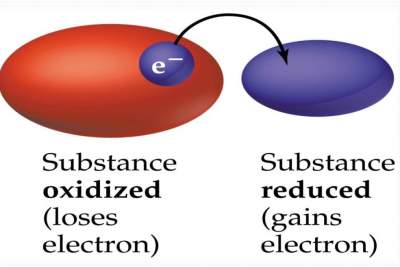Oxidation and Reduction Occuring Simultaneously
Remark
When a substance is oxidized, another should be reduced as illustrated below:

Question: How do we determine whether a chemical reaction is an oxidation-reduction reaction?
Answer:
By following the changes in the oxidation numbers of each element in the reaction.
Example
Zn(s) + 2HCl(l) → ZnCl2(aq) + H2(g)
Here, during oxidation, Zn(s) lost 2e to become Zn2+ whereas H+ gained 2e to become H2(g)
Zn (ON is zero) is oxidized to Zn2+ (ON is +2 ) , while H(ON is +1 ) is reduced to H2 (ON is zero).
H caused Zn to be oxidized → H is an "oxidixing agent"
Zn caused H to be reduced → Zn is an "reducing agent"
Balancing Equations
- Both mass and charge is reserved in chemical reactions.
- Electrons transfer from one compound to another, but not lost in a chemical reaction.
- A convenient way to balance an oxidation-reduction reaction is to separate the reaction into half reactions,
and deal with each half reaction separately then recombine them in a one final balanced reaction.
Examples
- Cr2O72−(aq) + CH3OH(aq) → Cr3+(aq) + HCO2H(aq)
- NO2−(aq) + Cr2O72−(aq) → Cr3+(aq) + NO3−(aq)
Balancing Equations in a Basic Solution
Here OH− and H2O are used instead of H+ and H2O
The same method is used, but here, OH− is added to "neutralize"
the H+ used, forming H2O
Examples:
- MnO4−(aq) + Br−(aq) → MnO2(s) + BrO3−(aq)
- Cr(OH)3(s) + ClO−(aq) → CrO42−(aq) + Cl2(g)
For more details, please contact me here.
Date of last modification: Summer , 2019
